#writing and research
Explore tagged Tumblr posts
Text
My brother is currently working on my laptop to see why my internet is so slow 🐌
He tells me it might be because I have too many tabs open 🤔
I don’t know what he’s talking about, it’s only 20+ ao3 fics, 10+ gdocs with wips, and maybe 15 or so research pages - it’s never been so few... 🤷♀️
16 notes
·
View notes
Text
writing tip: searching "[place of origin]ish names" will get you a lot of stuff and nonsense made up by baby bloggers.
searching "[place] census [year]" will get you lists of real names of real people who lived in that place.
#obviously not everywhere has a census or had one during the period you're writing in#but it's a better start than the goddamn baby bloggers#writeblr#writing research
38K notes
·
View notes
Text
It is incredibly important to train yourself to have your first instinct be to look something up.
Don't know how to do something? Look it up.
See a piece of news mentioned on social media? Look it up.
Not sure if something is making it to the broader public consciousness, either because you don't see it much or you see people saying nobody is talking about it? Look it up.
Don't know what a word means? Look it up.
It will make you a better reader and a better writer, but it will also just make you more equipped to cope with the world.
So often, I see people talking about something as though it is the first time anyone has ever acknowledged it, when I've been reading reports about it on the news for months or years. Or I see someone totally misinterpreting an argument because they clearly don't know what a word means--or, on the other hand, making an argument that doesn't make sense because they aren't using words the right way.
Look things up! Check the news (the real news, not random people on social media)! Do your research! You (and the world) will be better for it.
21K notes
·
View notes
Text

👀
#cosas mias#worldbuilding#imperialism#exactly#I mean beyond that it's a very interesting thing to know research and write about#you should always know where your food and the things you use in your daily life come from
21K notes
·
View notes
Text
Research can be fun when setting up characters, worldbuilding, and plot, but it's important to know when to stop researching and start writing. If you go too far overboard, you may want to ask yourself whether it's really fiction you want to be writing, or if you would rather write nonfiction instead.
1 note
·
View note
Text
So you know when you're writing a scene where the hero is carrying an injured person and you realize you've never been in this situation and have no idea how accurate the method of transportation actually is?
Oh boy, do I have a valuable resource for you!
Here is a PDF of the best ways to carry people depending on the situation and how conscious the injured person needs to be for the carrying position.
Literally a life saver.
(No pun intended.)
#writing tips#writing resources#writing reference#writing research#idk i thought it was cool#superhero#dc fanfic#batman fanfic#bkdk fanfic#fanfic#fan fiction#bakudeku#bkdk#jaytim#this was all for a jaytim fic im writing#it's my first a/b/o smut fic ever#yeehaw#i had to google if there was any way to carry an unconscious person up a ladder alone#i don't think you can#mha fanfic#bnha fanfic#coldflash#jaydick#idk any superhero ship works#im done tagging shit
6K notes
·
View notes
Text
changes and trends in horror-genre films are linked to the anxieties of the culture in its time and place. Vampires are the manifestation of grappling with sexuality; aliens, of foreign influence. Horror from the Cold War is about apathy and annihilation; classic Japanese horror is characterised by “nature’s revenge”; psychological horror plays with anxieties that absorbed its audience, like pregnancy/abortion, mental illness, femininity. Some horror presses on the bruise of being trapped in a situation with upsetting tasks to complete, especially ones that compromise you as a person - reflecting the horrors and anxieties of capitalism etc etc etc. Cosmic horror is slightly out of fashion because our culture is more comfortable with, even wistful for, “the unknown.” Monster horror now has to be aware of itself, as a contingent of people now live in the freedom and comfort of saying “I would willingly, gladly, even preferentially fuck that monster.” But I don’t know much about films or genres: that ground has been covered by cleverer people.
I don’t actually like horror or movies. What interests me at the moment is how horror of the 2020s has an element of perception and paying attention.
Multiple movies in one year discussed monsters that killed you if you perceived them. There are monsters you can’t look at; monsters that kill you instantly if you get their attention. Monsters where you have to be silent, look down, hold still: pray that they pass over you. M Zombies have changed from a hand-waved virus that covers extras in splashy gore, to insidious spores. A disaster film is called Don’t Look Up, a horror film is called Nope. Even trashy nun horror sets up strange premises of keeping your eyes fixed on something as the devil GETS you.
No idea if this is anything. (I haven’t seen any of these things because, unfortunately, I hate them.) Someone who understands better than me could say something clever here, and I hope they do.
But the thing I’m thinking about is what this will look like to the future, as the Victorian sex vampires and Cold War anxieties look to us. I think they’ll have a little sympathy, but they probably won’t. You poor little prey animals, the kids will say, you were awfully afraid of facing up to things, weren’t you?
#this is the sort of observation I make here that people#go off and write their thesis about#so while I’m not expecting to be the first or cleverest person to say this#if you do use it as a springboard#tell me if you get a good grade ok?#I’ll be tremendously proud of you#like if you take a shitpost and use it to craft deep attentive thought on something important#I just think that’s probably the most noble use of a human brain#it makes me want to take off my hat and slam it to the ground in inexpressible emotion#it’s a cowboy hat btw#and I say something like GOLDURN IT THAT KID SURE HAS DELIVERED.#ok so don’t deny me this#especially if you correct me after a long research journey#GOLDURN IT THE KID IS RIGHT!
34K notes
·
View notes
Text
I just know in my heart of hearts that in "Star Trek" at one point, there was some moral panic somewhere on Vulcan (among the uppity sorts) because Human culture was "infecting" the local youth with their overly emotional, destructive, unproductive, frivolous, and uneducational ways.
And what was actually happening was that a bunch of Vulcan kids got really into 23rd-century "Minecraft" or something.
Small Vulcan child @ another Vulcan child: (in a tone that sounds flat to Humans but angry as hell to Vulcans) "You have compromised the optimization of my fortress. I am having an emotional urge to blow up your house... in Minecraft."
#tossawary star trek#vulcans#I have notes on a fic I probably won't write about spock and kirk meeting as children through a minecraft forum#baby jim kirk writes a damn novel of an essay on changes that need to be made to make a better in-game Vulcan planet/biome#spock writes a damn novel of an essay back with further research and criticism#Kirk: “You are the ONLY person to notice that I adjusted the gravity in my New Vulcan demo!!! Wanna help me make my mod???”#meeting your t'hy'la through subspace net video game modding communities; nerds in space#fic ideas#spock
3K notes
·
View notes
Text

“You know my name. You know if more faithfully than some followers know the shape of the name of their gods.” The cosplayer’s lips turned up in a strange smile at that statement.
___________
1/3 commission pieces I had the honor to draw for @nachttour and their fic This body, too small a chamber on ao3! (I hope tumblr can appreciate the eye candy without flagging me ahhh🙈) (( I'm sure Shen Yuan can 😏))
#I'm actually very proud of the drawings I made for this commission! the fic in itself is very good as well... the way the author writes even#the most mundane stuff is so cool and researched in a way that you enter the story bodily!#my art#artist on tumblr#svsss
2K notes
·
View notes
Text
➺ suguru x gn!reader
if you set a timer to nap suguru will absolutely sabotage you.
let me set the scene. you're getting comfortable laying on his chest his arms secured around you and your eyes closing with a content hum and then suddenly your like 'oh hold on' and grab your phone to set a timer then promptly explain that you have something to do so you don't wanna oversleep during your nap and end up losing time.
but you're so tired, he knows a short nap won't be enough rest though, he says nothing. you get comfortable on his chest again, your cheeks smooshed against his skin and doze off shortly after thanks to the soothing hand at your back and head and the warmth of his skin. when you're asleep this man will fully just grab your phone and cancel the timer, that way, you get all the rest your body needs undisturbed and wake up when your ready.
if it's assignments or notes or anything really that he can do for you, then he will do it for you. taking neat concise notes for you, or finishing up your research paper. no this is not a violation of academic integrity because you are his baby. you are his person and he is yours so to anyone else you may as well be the same person, and anyway he isn't plagiarizing or cheating. suguru does a really good job actually.
when you wake up later, dry eyes slowly blinking away the sleep and readjusting to the light. the skin of your cheek turned pink from how long it's been resting against him softly greeting him in a small raspy voice. when you wake up enough to realize the timer hadn't gone off and reach over to your phone to check the time, the sleep leaves you so fast. you're frenzied, panicked, confused. as if you've been splashed with cold water. suddenly awake and upset about all the time you had wasted what about the timer? how are you supposed to finish everything now?? only for you to find everything done and neatly organized for you to look over, anything with a tight deadline? already sent in.
oh. well.. now that you have nothing that urgently needs your attention (besides him) you can lay back down on his chest and continue where you left off 🙂↕️

#i'm setting a timer to nap to sleep off this migraine and get back to work when i wake.#this is a fool proof plan#except that..#suguru doesn't approve#it's fine.. just no one say anything#he'll answer your emails for you. do research for you. prep questions and answers for a practice test he'll do with you later. anything#.. you may need really#whatever your field of work of study trust he will do whatever he can to lighten your burden. he will. help because suguru refuses to#do otherwise#geto suguru#suguru geto#jjk suguru#geto suguru x you#geto suguru x reader#jjk geto suguru#jjk suguru geto#suguru geto x reader#jujutsu kaisen#jjk#jjk fluff#jjk comfort#&. knightt writes ''─ .⟢
2K notes
·
View notes
Text
I know we all love when writers go deep down a research rabit hole on something really specific for the sake of a fic (I certainly am not immune to doing ridiculous research into minute details for no real reason lol)
but allow me, just for a moment, to sing the praises of ✨️vagueness✨️
Unfamiliar with a city's precise geography? Be real vague.
Want a character to be a doctor but don't know how surgery works? Mention it in passing.
Character plays a sport you know nothing about? Vague it up!
You don't know what specific brand of a thing would have been popular in that time and place? Go generic baby!!
You really can just hand-wave stuff that's not where you want the focus of your story to be without anything falling apart. The audience will look where you point them, like a magic trick! If the research is stopping you up and making progress hard or frustrating you can just... not do it.
#especially for fic. save the research energy for the stuff you WANT to deep dive.#writing advice#that no one asked for lol
3K notes
·
View notes
Text










A selection of strange and cryptic personal ads from The New York Herald, 1860s to 1890s. 14/?
#in the 8 years since I first posted these they have updated from photocopy quality microfilm to scans#the blue veil one sent me down one of the most interesting research rabbit holes I've been down in a long time#which i will definitely be writing about once I have written the 47 other things on my list#writing prompt#victorian#history#personal ads#ny herald personals#1860s#1870s#mysteries#gossip#journalism#writing prompts#writing inspiration#writing
4K notes
·
View notes
Note
vi x reader but they’re tribbing… for science reasons ofc !!
tribbing with vi | vi x fem!reader, shortfic, smut (18+) wc: 843

content warnings: mdni smut ; soft sex, soft top!vi, bottom!reader, kissing, scissoring/tribbing, profanities | masterlist
it’s dim in vi’s room. her sheets were slightly wrinkled beneath you, and the hum of the city outside her window was barely noticeable over the sound of her breathing—low, heavy, and uneven. she was on top of you, her strong, tattooed arms braced on either side, and her face hovered close enough for you to feel the warmth of her breath against your skin. her hair was messy, strands falling over her forehead as her blue eyes burned into yours.
“god, you’re so beautiful,” she muttered, her voice raspier than usual.
she kissed you again, slower this time. her body pressed flush against yours, the heat of skin between you almost unbearable. she’d been holding back all night, waiting, teasing herself with every touch and every kiss until she couldn’t take it anymore.
vi’s hands roamed down your sides, her fingers splaying wide as she gripped your hips, her thumbs tracing slow circles over your skin.
“is this okay?” she whispered as her forehead pressed to yours.
you nodded, biting your lip as her hands guided your thighs apart, her hips settling between them. you could feel every inch of her, the taut muscles beneath her skin, the way she moved carefully.
she moved slowly at first, testing, adjusting until her body slotted perfectly against yours. the first brush of her wet, wanting pussy against yours made you gasp, your fingers instinctively gripping her biceps, before moving down to her thigh, keeping her in place. vi could only groan at the sound, rolling her head back.
“f-fuck,” she muttered. “you feel so good, baby. so fucking good.”
“v-vi… fuck—“
she began to move, her hips rocking against yours, rutting against you, each thrust with a breathy grunt. she didn’t rush, though her body trembled with the effort to keep going. the friction was intoxicating. each roll of her hips sent a wave of pleasure through you, and vi seemed to feel it too, her groans mingling with your soft moans. she could feel how wet the both of you were right between your legs. it was sticky, and vi craves it—she craved having your slick all over her cunt, hers all over yours, the feeling of your throbbing clits brushing against each other with every thrust of her hips, oh fuck.
her hands stayed on your hips, holding you steady as she moved, her grip tightening each time you bucked against her.
“just like that,” she murmured, her voice cracking slightly. “keep moving with me, baby. you’re doing so good.”
you couldn’t help the way your hands wandered, sliding up her abs and squeezing her tit. vi let out a low growl at the feeling of your hands on her, her thrusts faltering for just a moment before she picked up the pace, grinding against you harder, faster. god, you were so fucking wet… and each sound that fell from your lips was the prettiest things she’d ever heard.
“look at me,” she murmured, her voice barely above a whisper. you
you opened your eyes—when had you closed them?—and the sight of her took your breath away. her lips were parted, her cheeks flushed deeply, and her eyes were dark, half-lidded but still focused entirely on you.
“i-i need to see you, baby,” she said, her voice shaky from the pleasure building in her stomach, between her legs. “need to see how good i’m making you feel—o-oh, ffuckkkk—“
“v-violet, i—”
your body arched off of the bed, and you gasped as the friction hit just right, her pulsing clit nudging yours, your nails digging into her thigh. vi groaned, her head dropping for a moment as she tried to collect herself, but she was too far gone, each buck of her hips becoming more erratic, more desperate.
“vi, i-i’m gonna—mmph, gonna—”
“i can feel you, baby,” she whispered, her voice thick, breath ragged as she furrowed her brows. “you’re so close, aren’t you? hah… come on, cum for me. nngh, please.”
her pleading tone sent a shiver down your spine, and you couldn’t hold back anymore. her grip on your hips tightens, her biceps flexing as she guides you both into a faster rhythm. she’s so lost in the moment, her blue eyes half-lidded as she stares at you like you’re the most beautiful thing she’s ever seen. and soon enough, your body tensed, your back arching as you came all over her pussy, your moan muffled as you buried your face in her neck. fuck fuck fuck, you felt so good. vi followed soon after, her own orgasm making her hips stutter as she pressed against you one last time, her body trembling against yours. panting, she moved carefully, wanting to be closer to you, resting her head on your shoulder as she tried to catch her breath, her arms wrapping around you tightly as if she couldn’t bear to let you go.
“oh, fuck,” she finally murmured, her voice soft and full of awe. she pulled back just enough to look at you, her eyes shining with pride. “i don’t think i’ll ever get enough of you.”

★ | navigation
#b’s writings#ahhh yes… scientific reasons… that is why i wrote this… for ur research ofc#vi <3#vi x reader#arcane#vi arcane#arcane x reader#fanfic#vi smut#smut#wlw
2K notes
·
View notes
Text
black girls,
make the content you want.
i’m serious.
idc if you think it’s gonna flop.
idc if you think you’re a terrible writer or artist.
idc if you believe that character/celebrity/athlete/whoever likes black girls or not. (who cares what the fandom says anyway!)
idc if you’re the first and only one to start that _____ x black reader tag.
make the content you want to see!
do it for you most importantly! (you will inspire others ofc)
in conclusion, you won’t get it if you won’t make it.

#black reader#black girl#black writer#black people#black content creator#black fanfic reader#black fanfic writer#x black reader#x reader#x black!fem!reader#marvel x black!reader#anime x black!reader#dc x black!reader#slasher x black!reader#i’m serious#you gotta make it girl#i was in the same boat just desperately waiting#and waiting for my asks to be accepted#not anymore#just write that scenario#if you can read it#you can write it#it’s gonna take practice and research#but you got this black girl#love a black woman from infinity to infinity
3K notes
·
View notes
Text
Fantasy Guide to Interiors
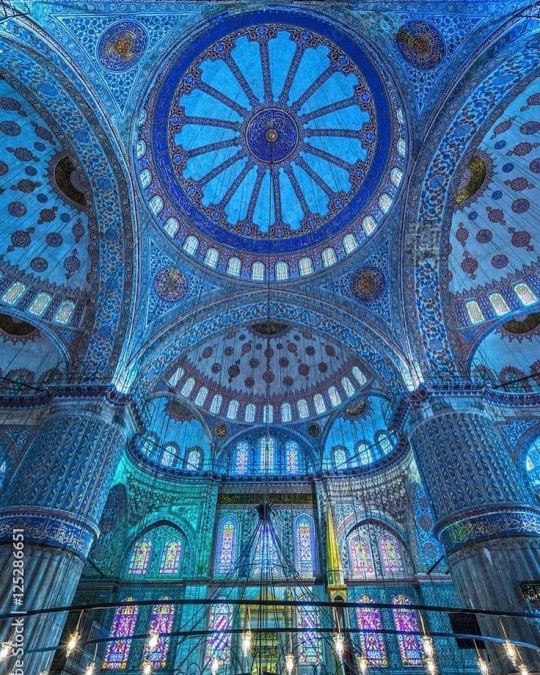
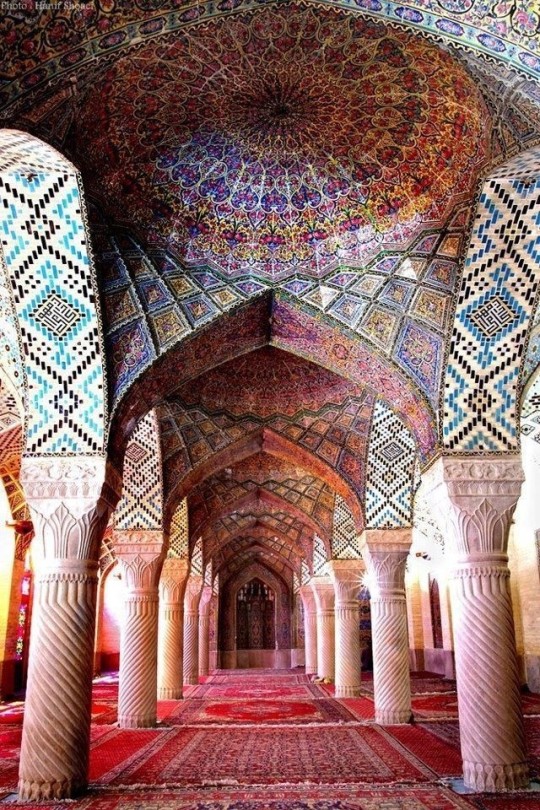
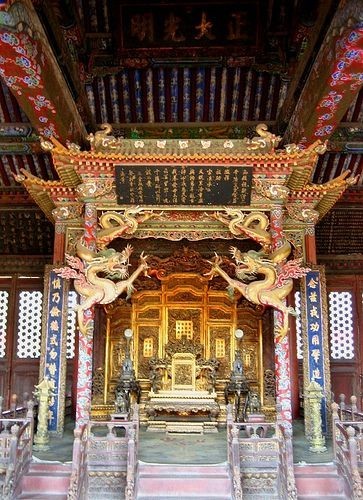
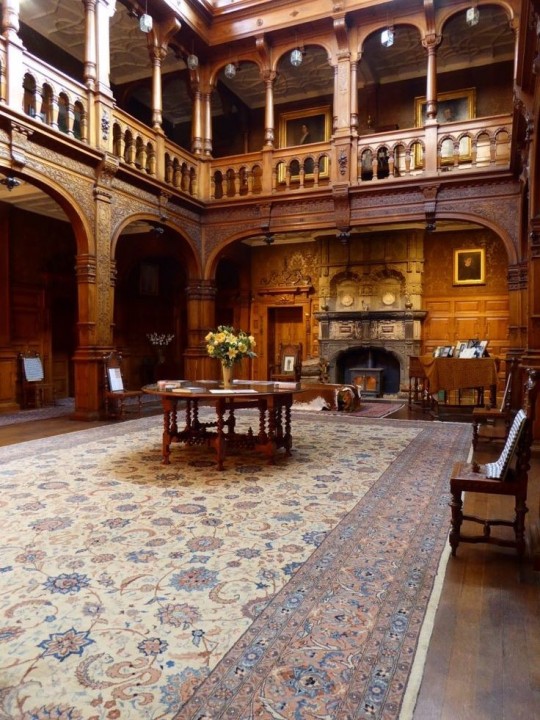
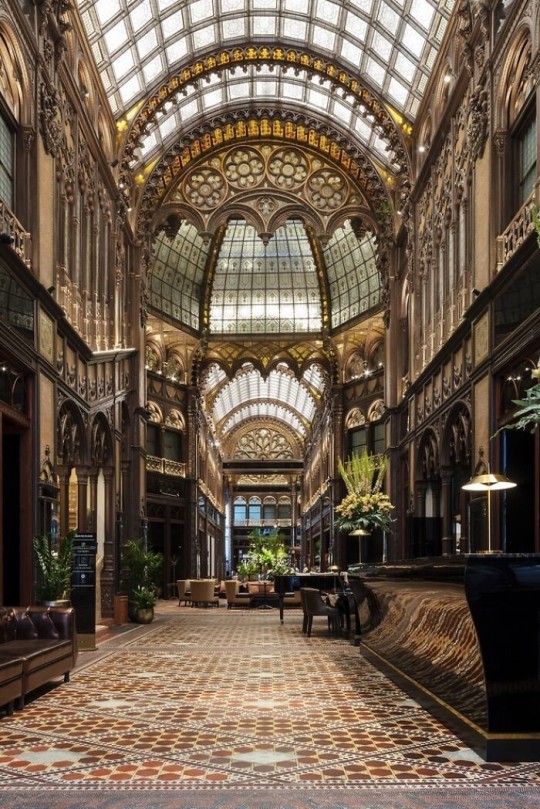
As a followup to the very popular post on architecture, I decided to add onto it by exploring the interior of each movement and the different design techniques and tastes of each era. This post at be helpful for historical fiction, fantasy or just a long read when you're bored.
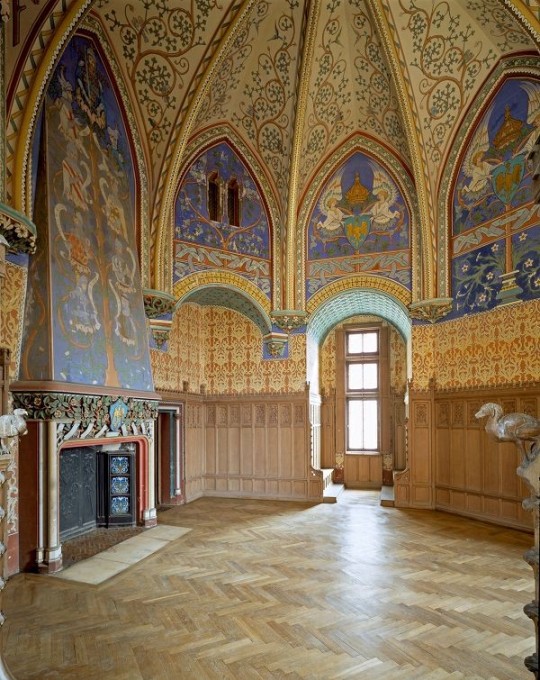
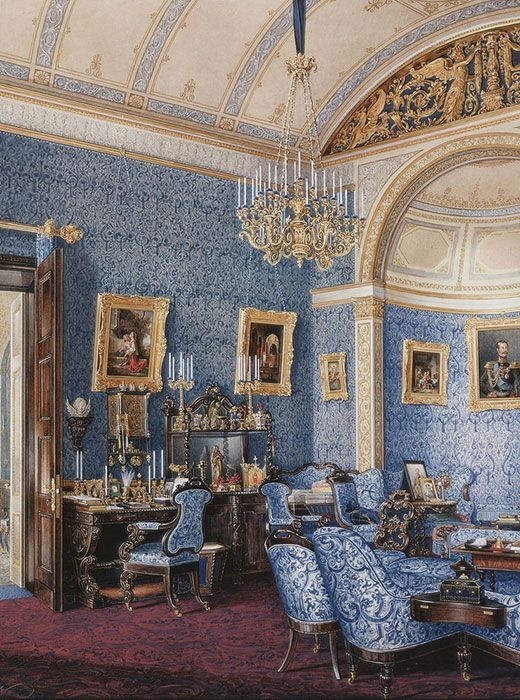
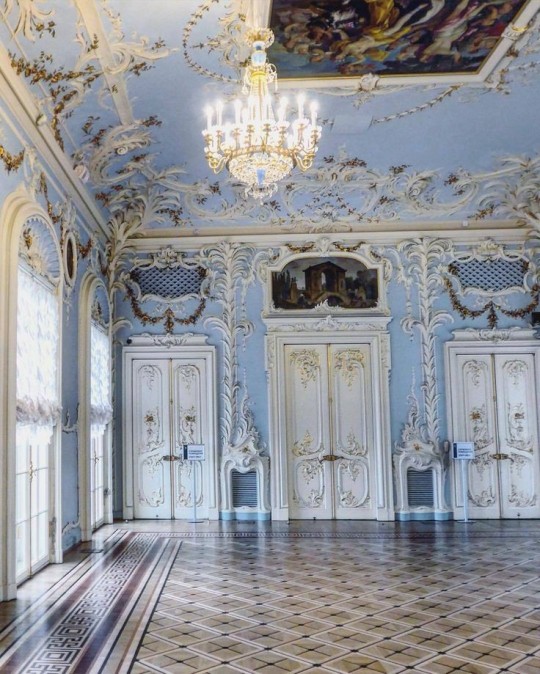
Interior Design Terms
Reeding and fluting: Fluting is a technique that consists a continuous pattern of concave grooves in a flat surface across a surface. Reeding is it's opposite.
Embossing: stamping, carving or moulding a symbol to make it stand out on a surface.
Paneling: Panels of carved wood or fabric a fixed to a wall in a continuous pattern.
Gilding: the use of gold to highlight features.
Glazed Tile: Ceramic or porcelain tiles coated with liquid coloured glass or enamel.
Column: A column is a pillar of stone or wood built to support a ceiling. We will see more of columns later on.
Bay Window: The Bay Window is a window projecting outward from a building.
Frescos: A design element of painting images upon wet plaster.
Mosaic: Mosaics are a design element that involves using pieces of coloured glass and fitted them together upon the floor or wall to form images.
Mouldings: ornate strips of carved wood along the top of a wall.
Wainscoting: paneling along the lower portion of a wall.
Chinoiserie: A European take on East Asian art. Usually seen in wallpaper.
Clerestory: A series of eye-level windows.
Sconces: A light fixture supported on a wall.
Niche: A sunken area within a wall.
Monochromatic: Focusing on a single colour within a scheme.
Ceiling rose: A moulding fashioned on the ceiling in the shape of a rose usually supporting a light fixture.
Baluster: the vertical bars of a railing.
Façade: front portion of a building
Lintel: Top of a door or window.
Portico: a covered structure over a door supported by columns
Eaves: the part of the roof overhanging from the building
Skirting: border around lower length of a wall
Ancient Greece
Houses were made of either sun-dried clay bricks or stone which were painted when they dried. Ground floors were decorated with coloured stones and tiles called Mosaics. Upper level floors were made from wood. Homes were furnished with tapestries and furniture, and in grand homes statues and grand altars would be found. Furniture was very skillfully crafted in Ancient Greece, much attention was paid to the carving and decoration of such things. Of course, Ancient Greece is ancient so I won't be going through all the movements but I will talk a little about columns.
Doric: Doric is the oldest of the orders and some argue it is the simplest. The columns of this style are set close together, without bases and carved with concave curves called flutes. The capitals (the top of the column) are plain often built with a curve at the base called an echinus and are topped by a square at the apex called an abacus. The entablature is marked by frieze of vertical channels/triglyphs. In between the channels would be detail of carved marble. The Parthenon in Athens is your best example of Doric architecture.
Ionic: The Ionic style was used for smaller buildings and the interiors. The columns had twin volutes, scroll-like designs on its capital. Between these scrolls, there was a carved curve known as an egg and in this style the entablature is much narrower and the frieze is thick with carvings. The example of Ionic Architecture is the Temple to Athena Nike at the Athens Acropolis.
Corinthian: The Corinthian style has some similarities with the Ionic order, the bases, entablature and columns almost the same but the capital is more ornate its base, column, and entablature, but its capital is far more ornate, commonly carved with depictions of acanthus leaves. The style was more slender than the others on this list, used less for bearing weight but more for decoration. Corinthian style can be found along the top levels of the Colosseum in Rome.
Tuscan: The Tuscan order shares much with the Doric order, but the columns are un-fluted and smooth. The entablature is far simpler, formed without triglyphs or guttae. The columns are capped with round capitals.
Composite: This style is mixed. It features the volutes of the Ionic order and the capitals of the Corinthian order. The volutes are larger in these columns and often more ornate. The column's capital is rather plain. for the capital, with no consistent differences to that above or below the capital.
Ancient Rome
Rome is well known for its outward architectural styles. However the Romans did know how to add that rizz to the interior. Ceilings were either vaulted or made from exploded beams that could be painted. The Romans were big into design. Moasics were a common interior sight, the use of little pieces of coloured glass or stone to create a larger image. Frescoes were used to add colour to the home, depicting mythical figures and beasts and also different textures such as stonework or brick. The Romans loved their furniture. Dining tables were low and the Romans ate on couches. Weaving was a popular pastime so there would be tapestries and wall hangings in the house. Rich households could even afford to import fine rugs from across the Empire. Glass was also a feature in Roman interior but windows were usually not paned as large panes were hard to make. Doors were usually treated with panels that were carved or in lain with bronze.
Ancient Egypt
Egypt was one of the first great civilisations, known for its immense and grand structures. Wealthy Egyptians had grand homes. The walls were painted or plastered usually with bright colours and hues. The Egyptians are cool because they mapped out their buildings in such a way to adhere to astrological movements meaning on special days if the calendar the temple or monuments were in the right place always. The columns of Egyptian where thicker, more bulbous and often had capitals shaped like bundles of papyrus reeds. Woven mats and tapestries were popular decor. Motifs from the river such as palms, papyrus and reeds were popular symbols used.
Ancient Africa
African Architecture is a very mixed bag and more structurally different and impressive than Hollywood would have you believe. Far beyond the common depictions of primitive buildings, the African nations were among the giants of their time in architecture, no style quite the same as the last but just as breathtaking.
Rwandan Architecture: The Rwandans commonly built of hardened clay with thatched roofs of dried grass or reeds. Mats of woven reeds carpeted the floors of royal abodes. These residences folded about a large public area known as a karubanda and were often so large that they became almost like a maze, connecting different chambers/huts of all kinds of uses be they residential or for other purposes.
Ashanti Architecture: The Ashanti style can be found in present day Ghana. The style incorporates walls of plaster formed of mud and designed with bright paint and buildings with a courtyard at the heart, not unlike another examples on this post. The Ashanti also formed their buildings of the favourite method of wattle and daub.
Nubian Architecture: Nubia, in modern day Ethiopia, was home to the Nubians who were one of the world's most impressive architects at the beginning of the architecture world and probably would be more talked about if it weren't for the Egyptians building monuments only up the road. The Nubians were famous for building the speos, tall tower-like spires carved of stone. The Nubians used a variety of materials and skills to build, for example wattle and daub and mudbrick. The Kingdom of Kush, the people who took over the Nubian Empire was a fan of Egyptian works even if they didn't like them very much. The Kushites began building pyramid-like structures such at the sight of Gebel Barkal
Japanese Interiors
Japenese interior design rests upon 7 principles. Kanso (簡素)- Simplicity, Fukinsei (不均整)- Asymmetry, Shizen (自然)- Natural, Shibumi (渋味) – Simple beauty, Yugen (幽玄)- subtle grace, Datsuzoku (脱俗) – freedom from habitual behaviour, Seijaku (静寂)- tranquillity.
Common features of Japanese Interior Design:
Shoji walls: these are the screens you think of when you think of the traditional Japanese homes. They are made of wooden frames, rice paper and used to partition
Tatami: Tatami mats are used within Japanese households to blanket the floors. They were made of rice straw and rush straw, laid down to cushion the floor.
Genkan: The Genkan was a sunken space between the front door and the rest of the house. This area is meant to separate the home from the outside and is where shoes are discarded before entering.
Japanese furniture: often lowest, close to the ground. These include tables and chairs but often tanked are replaced by zabuton, large cushions. Furniture is usually carved of wood in a minimalist design.
Nature: As both the Shinto and Buddhist beliefs are great influences upon architecture, there is a strong presence of nature with the architecture. Wood is used for this reason and natural light is prevalent with in the home. The orientation is meant to reflect the best view of the world.
Islamic World Interior
The Islamic world has one of the most beautiful and impressive interior design styles across the world. Colour and detail are absolute staples in the movement. Windows are usually not paned with glass but covered in ornate lattices known as jali. The jali give ventilation, light and privacy to the home. Islamic Interiors are ornate and colourful, using coloured ceramic tiles. The upper parts of walls and ceilings are usually flat decorated with arabesques (foliate ornamentation), while the lower wall areas were usually tiled. Features such as honeycombed ceilings, horseshoe arches, stalactite-fringed arches and stalactite vaults (Muqarnas) are prevalent among many famous Islamic buildings such as the Alhambra and the Blue Mosque.
Byzantine (330/395–1453 A. D)
The Byzantine Empire or Eastern Roman Empire was where eat met west, leading to a melting pot of different interior designs based on early Christian styles and Persian influences. Mosaics are probably what you think of when you think of the Byzantine Empire. Ivory was also a popular feature in the Interiors, with carved ivory or the use of it in inlay. The use of gold as a decorative feature usually by way of repoussé (decorating metals by hammering in the design from the backside of the metal). Fabrics from Persia, heavily embroidered and intricately woven along with silks from afar a field as China, would also be used to upholster furniture or be used as wall hangings. The Byzantines favoured natural light, usually from the use of copolas.
Indian Interiors
India is of course, the font of all intricate designs. India's history is sectioned into many eras but we will focus on a few to give you an idea of prevalent techniques and tastes.
The Gupta Empire (320 – 650 CE): The Gupta era was a time of stone carving. As impressive as the outside of these buildings are, the Interiors are just as amazing. Gupta era buildings featured many details such as ogee (circular or horseshoe arch), gavaksha/chandrashala (the motif centred these arches), ashlar masonry (built of squared stone blocks) with ceilings of plain, flat slabs of stone.
Delhi Sultanate (1206–1526): Another period of beautifully carved stone. The Delhi sultanate had influence from the Islamic world, with heavy uses of mosaics, brackets, intricate mouldings, columns and and hypostyle halls.
Mughal Empire (1526–1857): Stonework was also important on the Mughal Empire. Intricately carved stonework was seen in the pillars, low relief panels depicting nature images and jalis (marble screens). Stonework was also decorated in a stye known as pietra dura/parchin kari with inscriptions and geometric designs using colored stones to create images. Tilework was also popular during this period. Moasic tiles were cut and fitted together to create larger patters while cuerda seca tiles were coloured tiles outlined with black.
Chinese Interiors
Common features of Chinese Interiors
Use of Colours: Colour in Chinese Interior is usually vibrant and bold. Red and Black are are traditional colours, meant to bring luck, happiness, power, knowledge and stability to the household.
Latticework: Lattices are a staple in Chinese interiors most often seen on shutters, screens, doors of cabinets snf even traditional beds.
Lacquer: Multiple coats of lacquer are applied to furniture or cabinets (now walls) and then carved. The skill is called Diaoqi (雕漆).
Decorative Screens: Screens are used to partition off part of a room. They are usually of carved wood, pained with very intricate murals.
Shrines: Spaces were reserved on the home to honour ancestors, usually consisting of an altar where offerings could be made.
Of course, Chinese Interiors are not all the same through the different eras. While some details and techniques were interchangeable through different dynasties, usually a dynasty had a notable style or deviation. These aren't all the dynasties of course but a few interesting examples.
Song Dynasty (960–1279): The Song Dynasty is known for its stonework. Sculpture was an important part of Song Dynasty interior. It was in this period than brick and stone work became the most used material. The Song Dynasty was also known for its very intricate attention to detail, paintings, and used tiles.
Ming Dynasty(1368–1644): Ceilings were adorned with cloisons usually featuring yellow reed work. The floors would be of flagstones usually of deep tones, mostly black. The Ming Dynasty favoured richly coloured silk hangings, tapestries and furnishings. Furniture was usually carved of darker woods, arrayed in a certain way to bring peace to the dwelling.
Han Dynasty (206 BC-220 AD): Interior walls were plastered and painted to show important figures and scenes. Lacquer, though it was discovered earlier, came into greater prominence with better skill in this era.
Tang Dynasty (618–907) : The colour palette is restrained, reserved. But the Tang dynasty is not without it's beauty. Earthenware reached it's peak in this era, many homes would display fine examples as well. The Tang dynasty is famous for its upturned eaves, the ceilings supported by timber columns mounted with metal or stone bases. Glazed tiles were popular in this era, either a fixed to the roof or decorating a screen wall.
Romanesque (6th -11th century/12th)
Romanesque Architecture is a span between the end of Roman Empire to the Gothic style. Taking inspiration from the Roman and Byzantine Empires, the Romanesque period incorporates many of the styles. The most common details are carved floral and foliage symbols with the stonework of the Romanesque buildings. Cable mouldings or twisted rope-like carvings would have framed doorways. As per the name, Romansque Interiors relied heavily on its love and admiration for Rome. The Romanesque style uses geometric shapes as statements using curves, circles snf arches. The colours would be clean and warm, focusing on minimal ornamentation.
Gothic Architecture (12th Century - 16th Century)
The Gothic style is what you think of when you think of old European cathedrals and probably one of the beautiful of the styles on this list and one of most recognisable. The Gothic style is a dramatic, opposing sight and one of the easiest to describe. Decoration in this era became more ornate, stonework began to sport carving and modelling in a way it did not before. The ceilings moved away from barreled vaults to quadripartite and sexpartite vaulting. Columns slimmed as other supportive structures were invented. Intricate stained glass windows began their popularity here. In Gothic structures, everything is very symmetrical and even.
Mediaeval (500 AD to 1500)
Interiors of mediaeval homes are not quite as drab as Hollywood likes to make out. Building materials may be hidden by plaster in rich homes, sometimes even painted. Floors were either dirt strewn with rushes or flagstones in larger homes. Stonework was popular, especially around fireplaces. Grand homes would be decorated with intricate woodwork, carved heraldic beasts and wall hangings of fine fabrics.
Renaissance (late 1300s-1600s)
The Renaissance was a period of great artistry and splendor. The revival of old styles injected symmetry and colour into the homes. Frescoes were back. Painted mouldings adorned the ceilings and walls. Furniture became more ornate, fixed with luxurious upholstery and fine carvings. Caryatids (pillars in the shape of women), grotesques, Roman and Greek images were used to spruce up the place. Floors began to become more intricate, with coloured stone and marble. Modelled stucco, sgraffiti arabesques (made by cutting lines through a layer of plaster or stucco to reveal an underlayer), and fine wall painting were used in brilliant combinations in the early part of the 16th century.
Tudor Interior (1485-1603)
The Tudor period is a starkly unique style within England and very recognisable. Windows were fixed with lattice work, usually casement. Stained glass was also in in this period, usually depicting figures and heraldic beasts. Rooms would be panelled with wood or plastered. Walls would be adorned with tapestries or embroidered hangings. Windows and furniture would be furnished with fine fabrics such as brocade. Floors would typically be of wood, sometimes strewn with rush matting mixed with fresh herbs and flowers to freshen the room.
Baroque (1600 to 1750)
The Baroque period was a time for splendor and for splashing the cash. The interior of a baroque room was usually intricate, usually of a light palette, featuring a very high ceiling heavy with detail. Furniture would choke the room, ornately carved and stitched with very high quality fabrics. The rooms would be full of art not limited to just paintings but also sculptures of marble or bronze, large intricate mirrors, moldings along the walls which may be heavily gilded, chandeliers and detailed paneling.
Victorian (1837-1901)
We think of the interiors of Victorian homes as dowdy and dark but that isn't true. The Victorians favoured tapestries, intricate rugs, decorated wallpaper, exquisitely furniture, and surprisingly, bright colour. Dyes were more widely available to people of all stations and the Victorians did not want for colour. Patterns and details were usually nature inspired, usually floral or vines. Walls could also be painted to mimic a building material such as wood or marble and most likely painted in rich tones. The Victorians were suckers for furniture, preferring them grandly carved with fine fabric usually embroidered or buttoned. And they did not believe in minimalism. If you could fit another piece of furniture in a room, it was going in there. Floors were almost eclusively wood laid with the previously mentioned rugs. But the Victorians did enjoy tiled floors but restricted them to entrances. The Victorians were quite in touch with their green thumbs so expect a lot of flowers and greenery inside. with various elaborately decorated patterned rugs. And remember, the Victorians loved to display as much wealth as they could. Every shelf, cabinet, case and ledge would be chocked full of ornaments and antiques.
Edwardian/The Gilded Age/Belle Epoque (1880s-1914)
This period (I've lumped them together for simplicity) began to move away from the deep tones and ornate patterns of the Victorian period. Colour became more neutral. Nature still had a place in design. Stained glass began to become popular, especially on lampshades and light fixtures. Embossing started to gain popularity and tile work began to expand from the entrance halls to other parts of the house. Furniture began to move away from dark wood, some families favouring breathable woods like wicker. The rooms would be less cluttered.
Art Deco (1920s-1930s)
The 1920s was a time of buzz and change. Gone were the refined tastes of the pre-war era and now the wow factor was in. Walls were smoother, buildings were sharper and more jagged, doorways and windows were decorated with reeding and fluting. Pastels were in, as was the heavy use of black and white, along with gold. Mirrors and glass were in, injecting light into rooms. Gold, silver, steel and chrome were used in furnishings and decor. Geometric shapes were a favourite design choice. Again, high quality and bold fabrics were used such as animal skins or colourful velvet. It was all a rejection of the Art Noveau movement, away from nature focusing on the man made.
Modernism (1930 - 1965)
Modernism came after the Art Deco movement. Fuss and feathers were out the door and now, practicality was in. Materials used are shown as they are, wood is not painted, metal is not coated. Bright colours were acceptable but neutral palettes were favoured. Interiors were open and favoured large windows. Furniture was practical, for use rather than the ornamentation, featuring plain details of any and geometric shapes. Away from Art Deco, everything is straight, linear and streamlined.
#This took forever#I'm very tired#But enjoy#I covered as much as I could find#Fantasy Guide to interiors#interior design#Architecture#writings#writing resources#Writing reference#Writing advice#Writer's research#writing research#Writer's rescources#Writing help#Mediaeval#Renaissance#Chinese Interiors#Japanese Interiors#Indian interiors#writing#writeblr#writing reference#writing advice#writer#spilled words#writers
5K notes
·
View notes